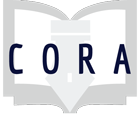kdr
Primary tabs
| Type | Title | Author | Replies | Last updated |
|---|---|---|---|---|
Assignments Adapted
I adapted this for an introductory mechanical engineering course and ran it during a lab period; in all it took about 90 minutes. I kept the framework of groups completing different authentic challenges, check-ins with a librarian, and a presentation at the end, and I focused the challenges around the course's first lab.
We had 5 groups of 4 students each with 3 unique, multi-part challenge activities. All groups had a reflection section to share what they learned about doing library research in engineering, what tips they'd share with their colleagues, and what questions or problems came up. After the short presentations, I emailed each section a PDF copy of all slides so students can refer to the cited resources for their lab reports.
It took a *lot* of planning time, but it paid off spectacularly. I incorporated reference materials, books, patents, historic and contemporary technical articles, and even items from our Special Collections. The students were engaged and the instructors loved it. This was a great activity for this group of students who had been to the library previously for humanities classes but hadn't done research for science or engineering classes. Thank you for sharing your lesson!
I adapted this assignment using Carolyn Caffrey Gardner's Google Form as a model. This activity was used for a 50 minute naval architecture honors class. The course is a 2 semester senior research and design capstone and my instruction happened early in the first semester.
I also had each group pause after answering each question so we could talk as a group before moving on to the next question. I combined steps 5 and 6 into a final question on the form in order to highlight specific databases and resources. This activity worked really well for this small group.
One tip for picking an article is to find something interdisciplinary. My choice for this naval architecture class was an article about autonomous underwater vehicles being used to find shipwrecks. This combination of archaeology, naval architecture and robotics meant the party topics went in totally different directions. Great conversations ensued.
